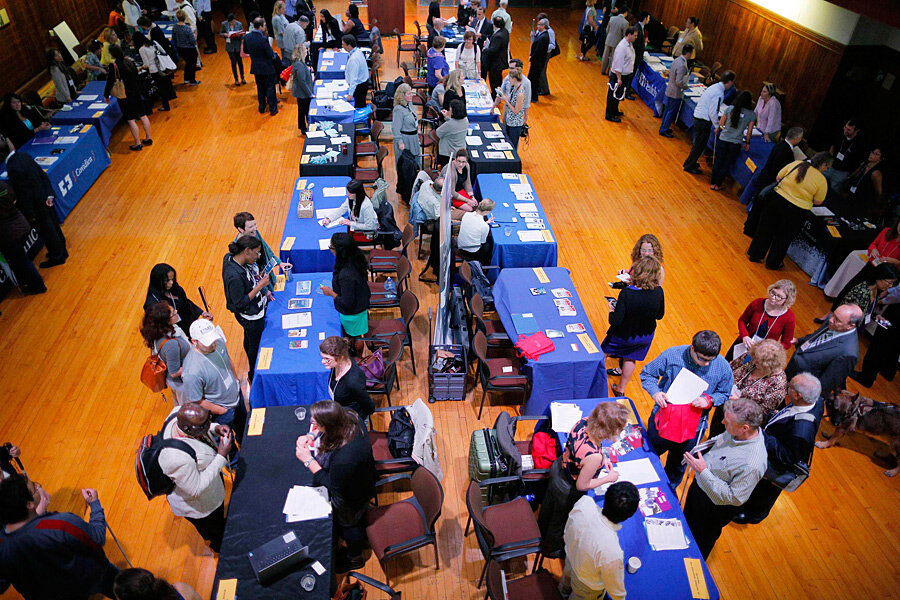US jobless claims at 40-year low: Is the labor market getting better?
Loading...
The number of Americans applying for new unemployment benefits last week dropped to its lowest point in more than 40 years, signaling that the labor market may be stronger than many economists had predicted. But the positive labor numbers do not mean that wage stagnation for those workers who do have a job is likely to end anytime soon.
Initial jobless claims fell last week to a seasonally adjusted 255,000, which is the lowest level since November 1973, the Labor Department reported on Thursday.
Summer is a volatile time for reliable unemployment numbers because it is generally the season that some large car assembly plants close for annual retooling. Because such stoppages don't affect all companies, it's more difficult for the Labor Department to accurately adjust its numbers.
Even with that caveat, Thursday's report points to a growing downward trend of unemployment that indicates a strengthening labor market.
The four-week moving average, which is less subject to weekly fluctuations and a better measure of labor market trends, fell 4,000 to 278,500 last week. The average level of claims has been near that mark since early April.
The numbers are being released as the movement for raising the minimum wage gains ground nationally. With the federal minimum wage at $7.25 an hour, American cities including Seattle, San Francisco, and Los Angeles in the past year have moved to raise their minimum wages to $15 an hour.
On Wednesday, the District of Columbia authorized a petition drive that could put the $15-an-hour minimum wage on the ballot in November 2016 elections. At the same time, a New York panel recommended that fast-food workers at chain restaurants statewide have their wages raised to $15, a move widely expected to be approved by the state's acting labor commissioner.
But that doesn't mean you should immediately march into your bosses' office and demand a raise.
While job growth has picked up and unemployment is continuing its seven-year downward trend, it has not been matched by corresponding wage increases, indicating that the labor market is still predominantly skewed to employers and not workers. Wages have only risen about 2 percent during the past 12 months.
"As an economist watching the economy, we're somewhat surprised that wages pressures have been so muted to this point," IHS Economics senior director Jim Diffley told Reuters. "We do expect an acceleration and in fact think it necessary to continue the recovery."
According to the Economic Policy Institute in Washington, the majority of Americans have faced wage stagnation for the past 35 years, and it is a major factor the rise of family income stagnation and income inequality. Furthermore, the failure of wages to grow highlights gender and racial wage gaps.
United States Secretary of Labor Thomas Perez said that shifting wages out of its stagnation is still a major part of the “unfinished business” of the nation’s economic recovery from the Great Recession.
“The rising tide of this economic wind at our back has to lift more boats,” he told The New York Times.
Optimistic signs of labor market growth have been tempered with a note of caution from the Federal Reserve, which is monitoring labor market conditions, including wage stagnation, to determine whether to raise short-term interest rates.
”While labor market conditions have improved substantially, they are ... not yet consistent with maximum employment,” Fed Chairwoman Janet Yellen told members of Congress last week.
Labor groups are calling on the Fed to hold off on rate hikes and focus on pursuing full employment in order to boost both job and wage growth.
“Raising interest rates too soon will slow an already sluggish economy, stall progress on unemployment, and perpetuate wage stagnation for the vast majority of American workers. This harm will be disproportionately felt by women and people of color, who are concentrated in the most vulnerable strata of the workforce,” said a report released by the Center for Popular Democracy and a coalition of labor groups.








